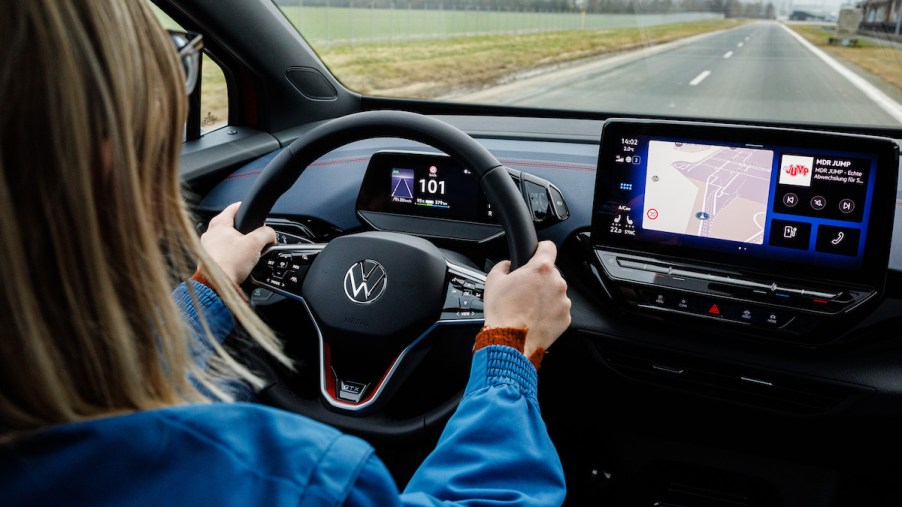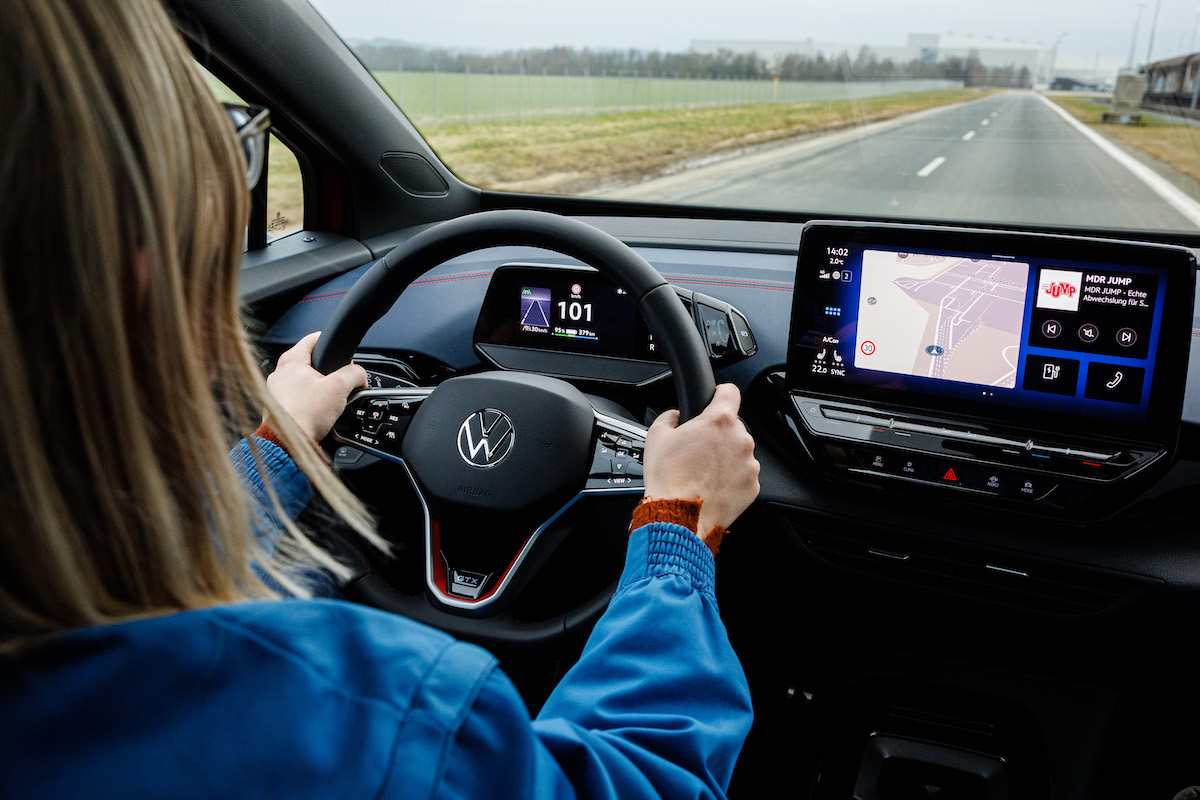
J.D. Power Explains Electric Power Steering vs. Hydraulic Power Steering
Back when TVs were black-and-white and the news was in paper form, steering a vehicle required forearm strength. To help, manufacturers fitted cars with larger steering wheels to give drivers leverage. But nowadays, controlling a vehicle’s front wheels gets tricky only when the power steering fails. Luckily, most people don’t know the trials of driving without power steering. Here’s more about this vehicle system and the difference between hydraulic and electric power steering.
What does power steering do?

Power steering provides the driver with a supplementary mechanical system to help turn the car’s wheels. Although this system rarely saw use until the 1970s and 1980s, it’s ubiquitous today. Power steering makes vehicles much easier to control, especially front-engine cars, whose motors sit over the front wheels. Although most sports car enthusiasts don’t worry about excessive weight in the car’s front end, the rest of us must.
Anyone who’s experienced power steering failure understands the brute force required to turn the wheel manually. Yet, as technology has improved in the auto industry, power steering has advanced. Vehicles are increasingly adopting electric power steering over the traditional hydraulic setup. Some drivers still have doubts about which is best — including sports car fanatics — but there are clear differences between them.
What is electric power steering?
Although electric power steering has only recently gained popularity, it’s been around since 1876, J.D. Power reports. According to Techhistorian, G.W. Fitts invented it, “but most of the information concerning how his system worked or even who Fitts actually was seems to be lost to time.” Nevertheless, because this power steering system is electric instead of hydraulic, drivers can enjoy consistent performance under varying conditions.
Electric power steering relies on an electric motor attached to the steering system. Using a plethora of sensors to communicate with the engine control unit, steering input can change in thousandths of a second. Alterations can be based on speed, cornering force, traction, torque vectoring, and other factors.
How does hydraulic power steering work?
As the more traditional means of steering assistance, hydraulic power steering has been around for over 70 years. The first production vehicle with the feature was the 1951 Chrysler Imperial, Car and Driver reports.
Hydraulic systems feature a pump, the main cylinder, and valves controlling fluid and applying force to the steering rack. Driven by the engine’s serpentine belts, the pump velocity is tied to speed. Therefore, a vehicle’s wheels turn slower at low speeds but are more responsive at higher speeds.
Electric vs. hydraulic: Which system is better?
Hydraulic power steering has been around for decades and has seen improvements to meet modern standards. Electric power steering features fewer moving parts, reduces a vehicle’s weight, and is more precise. However, keen drivers have a love-it-or-hate-it relationship with the latter.
For example, many drivers prefer hydraulic power steering, especially those in rear-engine or mid-engine cars. That’s because hydraulic fluid remains under constant pressure, and feeling remains in the steering wheel. Astute drivers value this active feedback, making them feel more in contact with the road.
Still, electric power steering has far more upsides, mainly because of the lack of drawbacks. Although there’s less road feel with electric systems, they don’t require fluid that needs to be changed. And because they have fewer parts than hydraulic systems, repairs are cheaper and can occur less often. Hydraulic power steering systems also zap more energy from the engine because they’re belt driven. Although electric power steering draws power from the battery, it does so only when turning; therefore, less energy is used.
Hydraulic power steering just doesn’t stack up to its electric equivalent. Yes, the former gives drivers the feeling of being one with the car, but the latter offers daily commuters what they need. As manufacturers switch to more advanced vehicle systems, electric power steering might soon be the only choice.


